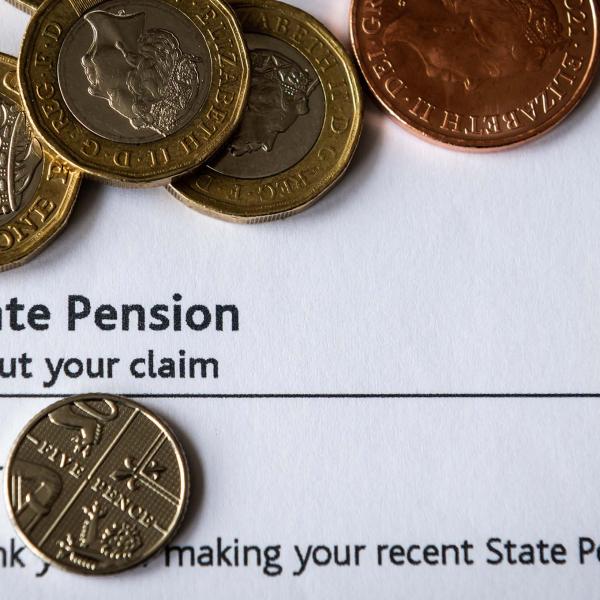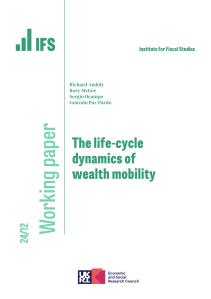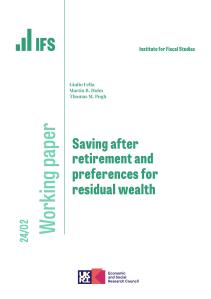Reforms to two of the three largest public service pension schemes in England and Wales – the NHS and the Teachers’ Pension Schemes – are coming into effect tomorrow, Wednesday 1 April, changing radically how pensions for members of these schemes are calculated.
These changes are the final changes made to public service pensions by the coalition government following Lord Hutton’s Review in 2011. (Changes to the Local Government Pension Scheme – the largest public service pension scheme in England and Wales – came into effect in April 2014.)
Until now members of the NHS and Teachers’ Pension Schemes have accrued a pension that pays a fraction of their final salary from their “Normal Pension Age” (NPA). For those who joined the NHS scheme before 1 April 2008, or the Teachers’ Pension Scheme before 1 January 2007, this NPA was set at age 60; while for those who joined more recently it was, as a result of reforms implemented by the last Labour government, increased to age 65.
The latest reforms have changed the system in three key ways (further details are provided in the table below), which taken together will reduce overall pension entitlements and, therefore, reduce the amount of future taxpayer support for these schemes:
- Pension benefits are to be calculated as a fraction of career average earnings rather than final salary.
- The NPA has been increased to be aligned with each member’s state pension age (SPA).
- The fraction of earnings accrued in pension for each year of service has been made more generous.
These changes only affect the pension that scheme members will accrue in future; they have no effect on the pension rights that members have already accrued: so if an individual draws a pension at their old NPA, the payment in respect of service before 2015 will be unchanged. The changes for pension accrual from 2015 onwards affect different people in different ways depending on when they joined their pension scheme, their age and their salary progression.
Those who were within 10 years of their NPA on 1 April 2012 are unaffected: they will continue to accrue pension rights under the old final salary scheme rules.
Those who were more than 10 years from the NPA on 1 April 2012 and who joined the pension schemes prior to Labour’s reforms will be made worse off on average. This is primarily because they will see an increase in their NPA from 60 to at least 66. This means that they would have to pay into their pension for at least six more years in order to receive their full pension (albeit – with extra years of service – potentially a larger annual pension) for at least six fewer years. This is a substantial fall in average generosity for this group.
Those who were more than 10 years from their NPA on 1 April 2012 and who joined the pension schemes after Labour’s reforms will, on average, only be a little worse off. Their NPA will increase slightly, their pension will be calculated based on career average earnings, rather than final salary, and they will receive more generous annual accrual. For this group our previous calculations suggest that average pension accrual – that is the increase in the value of an individual’s pension arising from one more year of service – will fall only marginally from 18.3% of salary to 17.7% of salary.
These figures are, however, just averages. Final salary schemes are more generous to those who see rapid growth in their pay, particularly when this happens towards the end of a long career. This is not the case when a career average earnings measure is used instead. So the move to a career average scheme will be particularly detrimental to “high flyers”, who will lose out relative to those who experience lower pay progression. Previous calculations by IFS researchers suggest that low educated workers, whose pay tends to rise less quickly as they age, may actually see their pensions made more generous as a result of this reform. Since they are also the group who are least likely to be covered by a relatively generous employer-provided pension in the private sector, the latest reforms actually exacerbate differences between the public and private sector in the current pattern of pension provision across education groups.
One of the other changes to public service pensions recommended under Lord Hutton’s review – an increase in employee contributions – also affected higher earners more than low earners. Employee contributions now have a “tiered” structure, with contributions substantially higher as a fraction of salary for higher earners than for lower earners. However, the majority of the contribution increases have already been implemented, rather than being introduced for the first time in 2015–16.
These reforms to public service pensions come on top of Labour’s increase in the NPA to age 65 for most new members, a previous increase in member contribution rates, and the current government’s substantial reduction in the generosity of indexation (by changing the measure of inflation used from RPI to CPI). Taken together these reforms dramatically reduce the overall generosity of public service pensions: previous estimates suggest that without any of these reforms average accrual would have been twice as large.
Despite these reductions, on average public sector employees still accrue more generous pensions than their private sector counterparts. The vast majority (87%) of public sector workers are members of an employer provided pension scheme but this was only true of 49% of private sector employees in 2014. Although automatic enrolment will continue to boost coverage in the private sector, the defined contribution schemes typically on offer in the private sector are much less generous than the defined benefit schemes available to most public sector workers. In 2014, 83% of public sector workers were a member of a defined benefit pension scheme compared to just 9% of private sector employees.
The new structure for public service pensions has considerable advantages over the previous system. The move to a career average basis is a sensible change; the previous final salary pension schemes were disproportionately beneficial to long-stayers who received pay increases towards the end of their career. For example, it is unclear why a teacher who subsequently goes on to become a headteacher should receive a more generous pension for the years in which they are working as a teacher than a teacher who does not subsequently become headteacher.
Aligning the NPA for employees of the same age will also end the practice where employees of the same age, in the same job, with the same headline pay accrue a different pension depending on whether they joined the scheme just before or just after Labour’s cut coming into effect. Finally, aligning NPAs with the SPA – which will mean that future rises in the SPA will automatically feed through into further increases in the NPA – is a coherent way for the government to help tackle the public finance challenge posed by rising longevity.
The NHS and Teachers’ Pension Scheme rules
| NHS Pension Scheme | Teachers’ Pension Scheme | |||||
| Pre-Labour | Labour's bequest | New | Pre-Labour | Labour's bequest | New | |
| Normal Pension Age | 60 | 65 | SPA | 60 | 65 | SPA |
| Salary | Final | Final | Career-average (revalued by CPI plus 1.5%) | Final | Final | Career-average (revalued by CPI plus 1.6%) |
| Accrual | 1/80th plus 3/80ths lump sum | 1/60th | 1/54th | 1/80th plus 3/80ths lump sum | 1/60th | 1/57th |
| Indexation | RPI | RPI | CPI | RPI | RPI | CPI |










